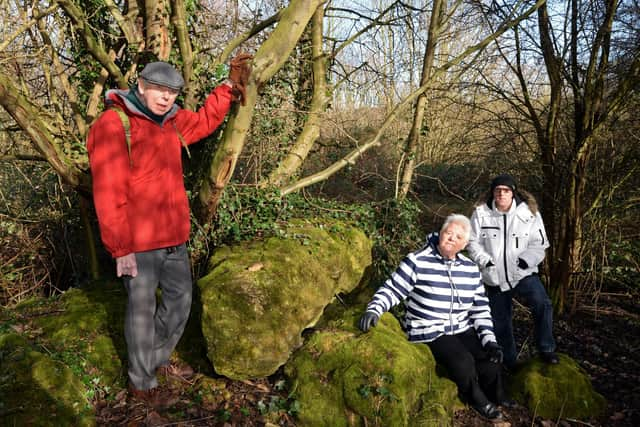Hunt is on to solve mystery of Doncaster pre-historic beast
and live on Freeview channel 276
The bones of a woolly mammoth - together with remains from a rhinocerus and a hyena - were discovered on The Crags between Conisbrough and Denaby, in 1878.
Workmen digging a trench for the area’s first water supply came across the huge bones and took them home, without a clue as to what they had found.
Advertisement
Hide AdAdvertisement
Hide AdThe bones eventually found their way into the hands of distinguished geologist, Edward Bennett Jenkinson - but after apparently being exhibited at Sheffield’s Weston Park Museum, nothing was then heard of them.


Friends of The Crags, a new group working to improve the Crags area, is now trying to track down the prehistoric remains - as part of its push to turn The Crags into a unique leisure park, where health meets history.
By chance, Weston Park staff are currently running a cataloguing initiative on mammoth bones - but so far the ‘Denabysoar’ has not turned up!
Friends chairman Tony Sellars said: “These bones are probably the most unusual of the many historic features on this area of land, and it would be wonderful to find and photograph them if we can.”
Advertisement
Hide AdAdvertisement
Hide AdAlistair McLean, curator of natural science, Museums Sheffield, added: “The Friends of the Crags got in touch with us last month to ask if we could help locate the mammoth bones.
“The information they had suggested the bones came to Weston Park Museum in 1878, but our historical log unfortunately doesn’t show any record of them. We’re currently finalising an audit of our mammoth osteology material, which would indicate if the bones had been catalogued incorrectly at the time, but so far we haven’t discovered anything.
“Today we have strict acquisition processes which help us easily identify and locate objects that come into the collection, but that wasn’t the case in the 1800s. If the bones aren’t with us, which sadly looks likely, then we’ll do all we can to help the Friends in their search.”